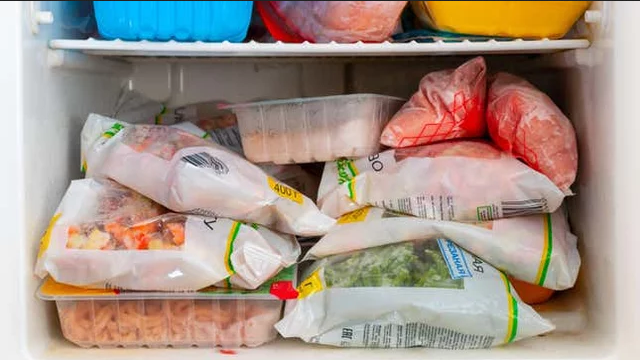
It’s difficult to imagine modern life without access to refrigeration. Not only does it make grocery shopping a lot easier to plan, being able to freeze our food and leftovers
allows us to take advantage of bulk discounts and reduce food waste. Plus, having a freezermeans you can literally enjoya burrito wheneveryou want one, a triumph of human ingenuity if you ask me.
Your first cluesthat the food you just extracted from your frost-encrusted freezer willbe disappointing (and possibly gross)areits appearance and color
. Follow your gut here: If it’s never thawed out, it’ssafeto eat, but if it doesn’t look the way you remember itor how you expect it to look, it’s probably not going to taste very good. Here’s what to look for:
Finally, if your frozen food is coated in a layer of ice crystals it’s most likely freezer burned
, which means the water in it has been pulled out to the surface. Freezer-burned food is safe to eat, but will be tough and flavorless (except for the taste of freezer burn, which is a bad taste).
Even if your frozen food looks okayor you’re willing to ignore its yucky appearance, the next test is how it smells. This one should be pretty instinctual: If it smells bad, you probably don’t want to eat it. But over-frozen foods that are still safe to eat typically don’t smell rotten—they just smelloff.
Often there’s a “plastic” smell to the food, indicating freezer burn, or the food simply smells stale when you thaw it out. If your freezer has a smell caused byprevious problems like a temporarypower loss, your frozen food may absorb that smell over time, making it unappetizing even if it’s okay to eat. And if your frozen food smells like other foods in the freezer, something has gone wrong with the process.
Finally, even if your frozen food looks and smells okay, its texture offers one final clue as to whether it will be enjoyable to eat it: